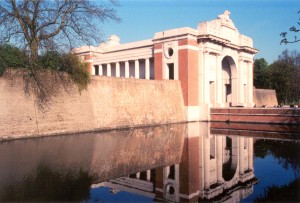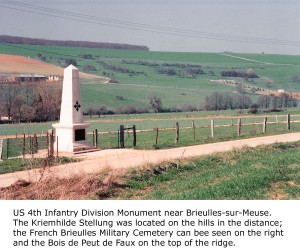Do you always want to see what Omaha Beach looked like from the perspective of American soldiers on D-Day? What did the First World War trench lines look like? What exactly did the Waterloo Battlefield look like to Napoleon or to Wellington? How about the spot in Rouen’s medieval quarter where Joan of Arc was burned at the stake?
For those who cannot bear the expense of traveling to distance countries, but who have the desire to see where historically significant military events took place, we have developed a new tool that takes you there. Virtual Battlefield Tours allow armchair military enthusiasts to place themselves in the actual location of famous engagements and heroics actions on northern Europe’s numerous battlefields.
The basis for these tours is the free Google Maps web site and it does not require any additional computer software or expense. These maps can be viewed from computer, smart phone, tablet, or any device that can access the internet.
Google maps is a wonderful tool to view the world. Its satellite view option permits seeing the chosen site from directly above, thus allowing one to see the seashore, lakes, rivers, villages, and forests as they exist today. Move to street view by clicking on and dragging the little yellow man icon to get right down to ground level to see buildings, fortifications, memorials, street signs, road intersections, or anything that a camera can pick out on the ground. Additionally, little blue dots indicate those locations where others have posted photos onto the map to show things what sometimes is not visible with the Google streetview cameras.
Like any technology, there are a few caveats: for the most part, streetview is not available in Germany or Luxembourg and small details are outside the resolution of the streetview cameras; many of the inserted photos are not placed in the exactly correct location, people have been a little sloppy about that; and, finally, you have to know where battlefield events took place.
That’s where Virtual Battlefield Tours come in. French Battlefields, utilizing its extensive directory of battlefield locations developed during the writing of Fields of War: Fifty Key Battlefields in France and Belgium, has identified these exact locations. Customized Google maps now identify terrain features, memorials, historic buildings, museums other features pertaining to the battle and mark them with its custom icons. Each icon is accompanied with a brief description of the site and, in most cases, photographs of the site. Clickable links offer instant access to museum or tourist office websites.
Now, from the internet website http://www.frenchbattlefields.com/ or our corresponding blog site at www.frenchbattlefields.com/blog you can find the battle of your interest and see what the participants saw, what remains of fortifications, and how the battle has been remembered and commemorated. On the website, click ‘Maps’ to be taken to a menu of wars and engagements. On the blog site just click ‘Categories’ on the right hand column, then scroll down. Click on ‘Virtual Battlefield Tours’ and all of the tours will appear. In both cases, a small version of the map is below each summary; click on the link below the map to take you to the Google custom map location. Enjoy wandering the fields and villages of Europe.
This massive undertaking is an ongoing project and only a limited number of battlefields are currently available. On the blog site, click ‘Entries RSS’ at the bottom of the screen to be automatically notified by email of new additions to Virtual Battlefield Tours.


